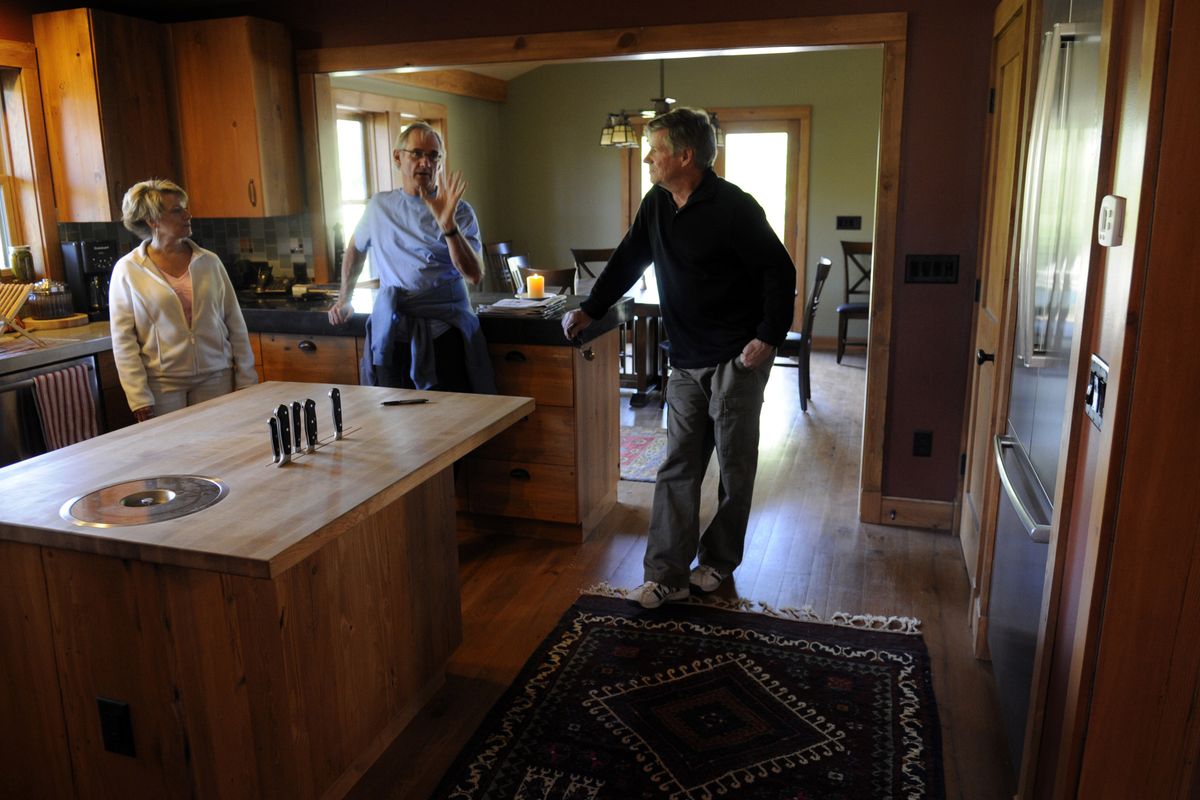Sustainability showcase
Tour highlights Spokane homes on forefront of eco-friendly design

Homeowner Jim Sheehan had to be happy about all the sunshine Sunday that drew a few hundred people to his eco-friendly home on Spokane’s first Green + Solar Home and Landscape Tour.
Not only did the weather boost the crowd, it also had his electrical meter spinning wildly – backward.
Sheehan’s 58 solar panels, mounted on the south-facing portion of his roof, were producing enough electricity to feed power back into the region’s electrical grid. The well-insulated structure is considered a “net zero” home, and Sheehan saves on his power bill every time the sun shines.
Judging by the turnout Sunday, there is an increasing interest in Spokane of environmentally friendly building techniques, and that parallels a trend seen nationally.
“People are becoming much more aware of the green movement,” said Nadine Sullivan, owner of Eco Depot Inc., a retail outlet for eco-friendly building materials at 1326 E. Sprague Ave.
As the cost of solar energy systems comes down and incentives for installing them go up, more and more people are making the investment.
“Five years ago, nobody was doing it,” said Greg Rehn, who specializes in solar water heating and plumbing. “In the past year, we’ve probably done a dozen (systems).”
The cost of photovoltaic panels is about $8 to $10 per watt of electricity produced, or around $10,000 for a typical system. It takes about 10 years to recoup the cost through power savings, but the panels might last 25 to 30 years, said architect Kelly Lerner, of One World Design.
Lerner said that people thinking about improving energy efficiency would be smart to first make sure they have good insulation, weatherstripping and energy-saving appliances.
“Start with the low-hanging fruit and go from there,” she said, adding that energy use habits can also be modified.
Lerner designed a remodel of a home at 1608 S. Ash St. that includes solar panels for heating the hot water.
Homeowner Steve Daehlin said he and his wife, Wanda, made the investment for an ecological home out of a sense of social responsibility.
“We love our earth,” he said while tour-goers milled about. He estimated that the additional cost was 10 percent to 20 percent above conventional home-building.
The restoration includes a Solatube skylight device near the entryway, a sustainable cork floor in the upstairs kitchen, locally harvested ash wood in the floors and light-emitting diode fixtures.
Sheehan’s Craftsman-style house overlooking the Spokane River at 2104 W. Clarke Ave. was created out of an older home that had stood on the site since the 1950s. Its 2,600 square feet of living space on several levels was built entirely of local, recycled and environmentally friendly products, including concrete kitchen counters made by a local craftsman.
There is no air conditioning system. Insulation and air flow design keep the house cool in the summer, said Patsy O’Connor, one of the architects on the Sheehan project.
Rainwater is collected from the metal roof and piped into a holding tank for reuse in irrigating the landscape and garden. The driveway is made from square concrete bricks with space between them to allow water to soak back into the ground rather than become runoff.
Mike and Tanya Conklin said they attended the tour to get ideas for a home they plan to build. Tanya Conklin said she would happily sacrifice square footage to get an environmentally friendly home.
The tour was a project of Community-Minded Enterprises in Spokane and the state Department of Ecology and part of a Sustainable September series of environmental awareness efforts. Sunday’s tour involved nine homes across the county, including some built with straw bales. The homes also contain products and paints that protect indoor air quality by not giving off hazardous fumes.
“I think it’s really important to get this (information) out about what can be done,” said Sheehan, an attorney who has used a large family inheritance to create Spokane’s Center for Justice, the Community Building that houses the center, the Saranac Hotel conversion to house community organizations, and other projects.